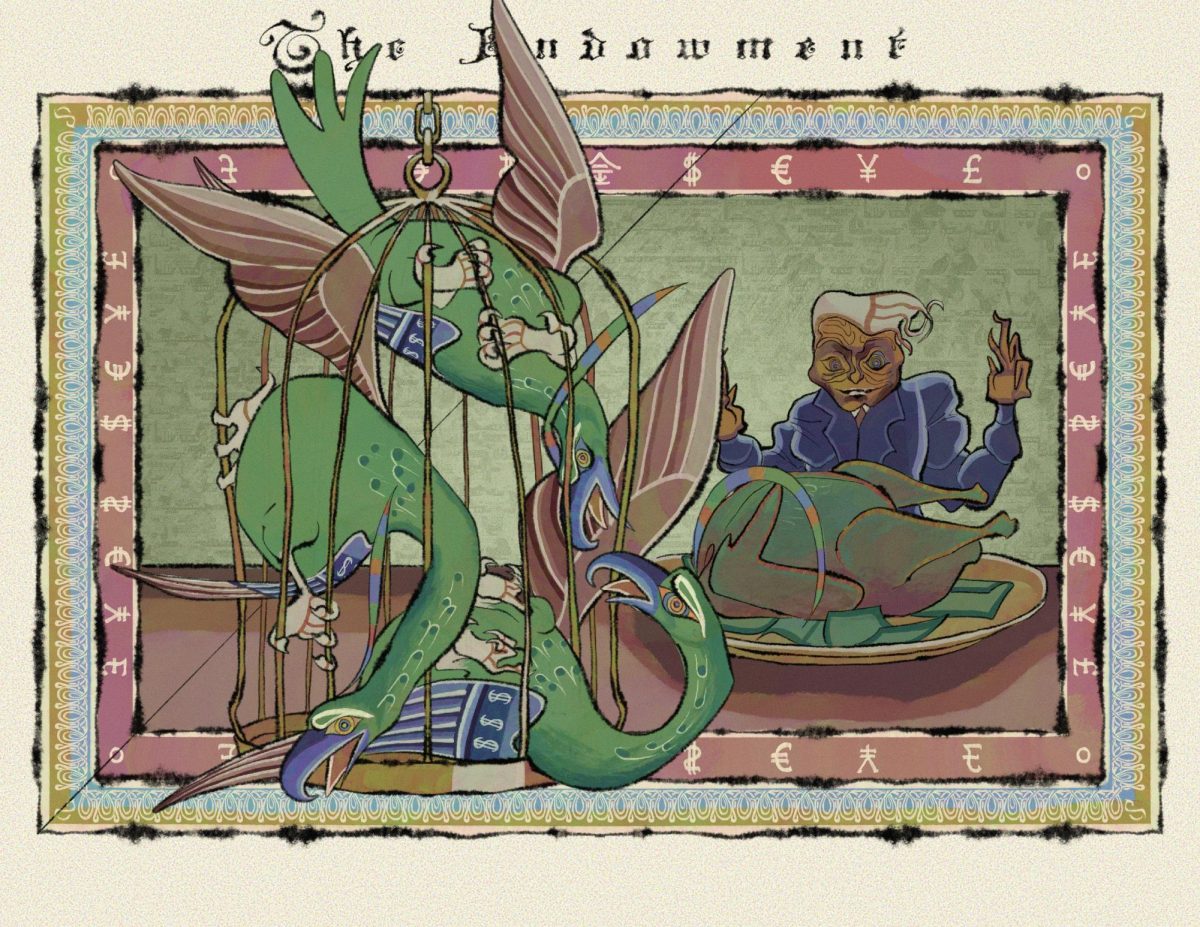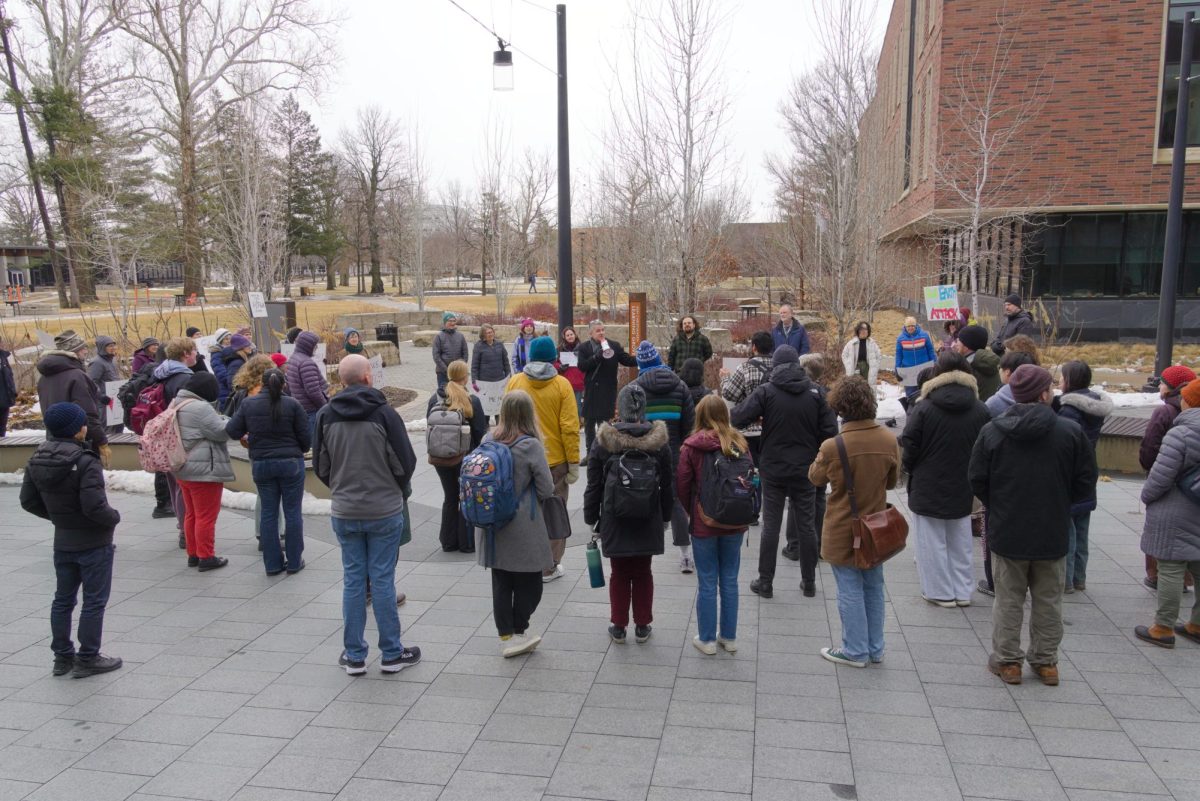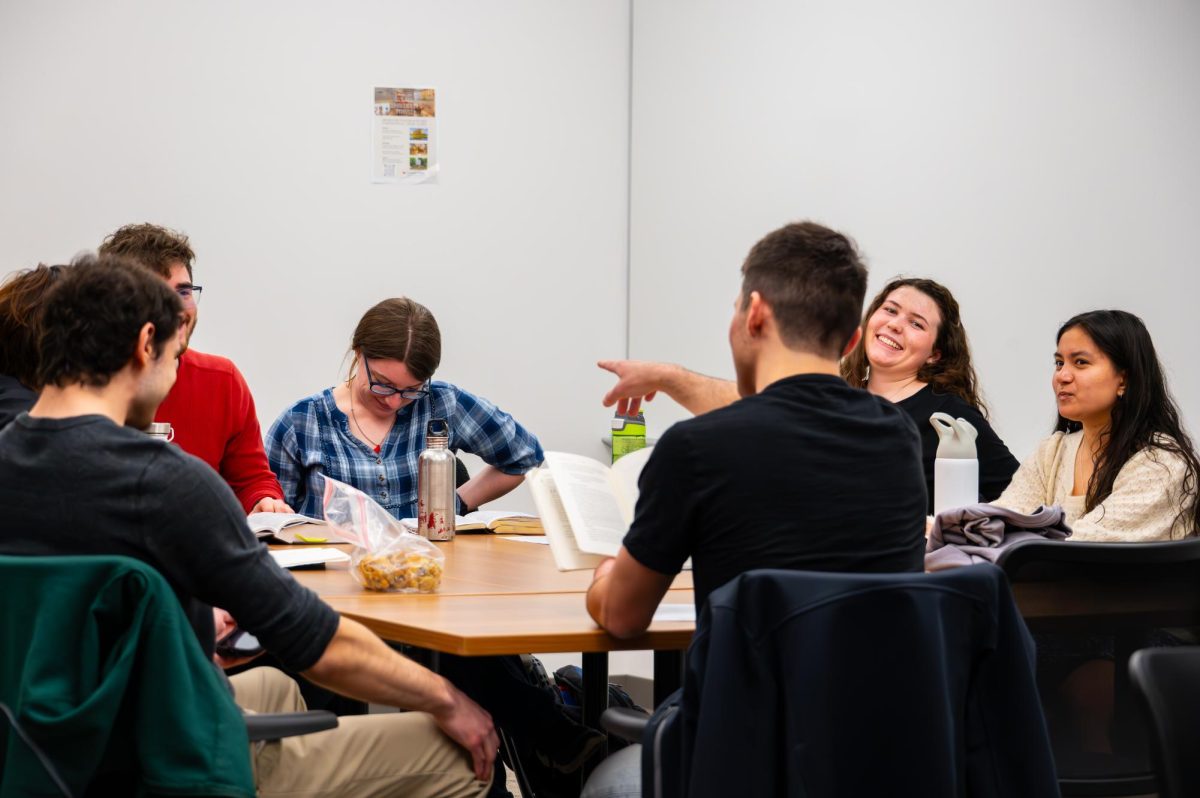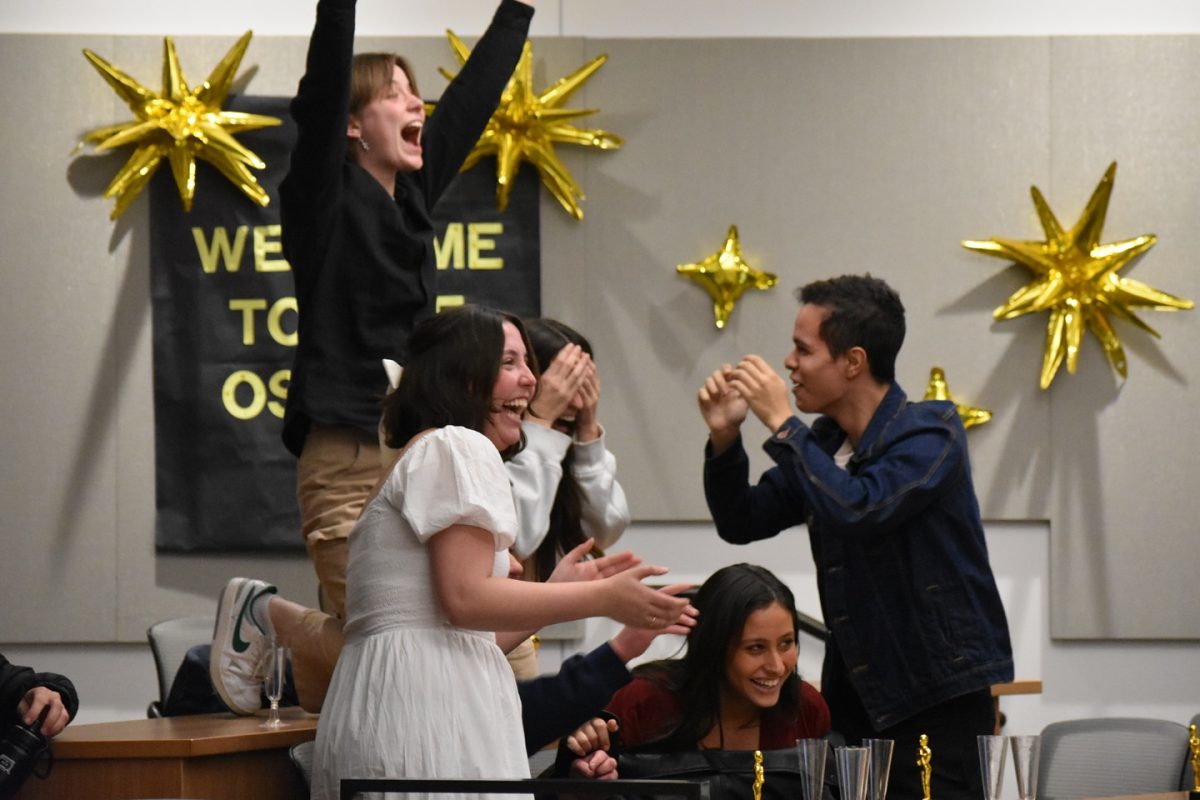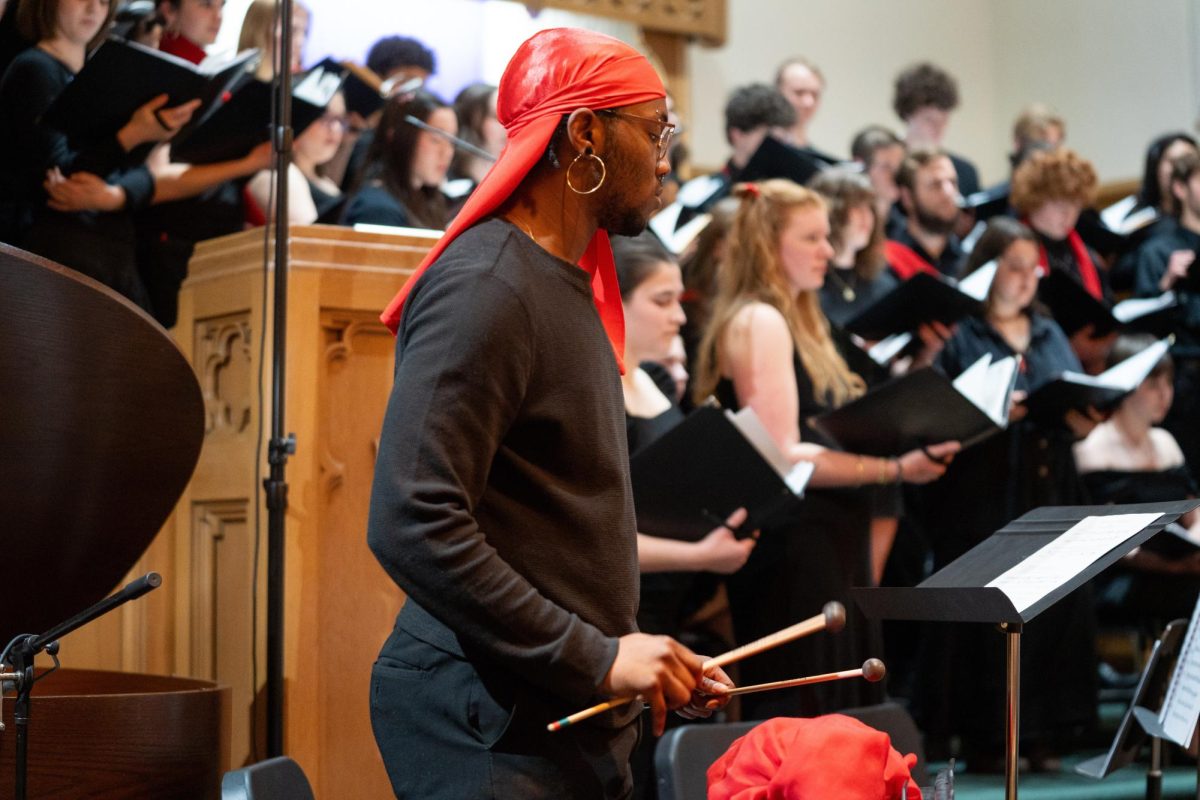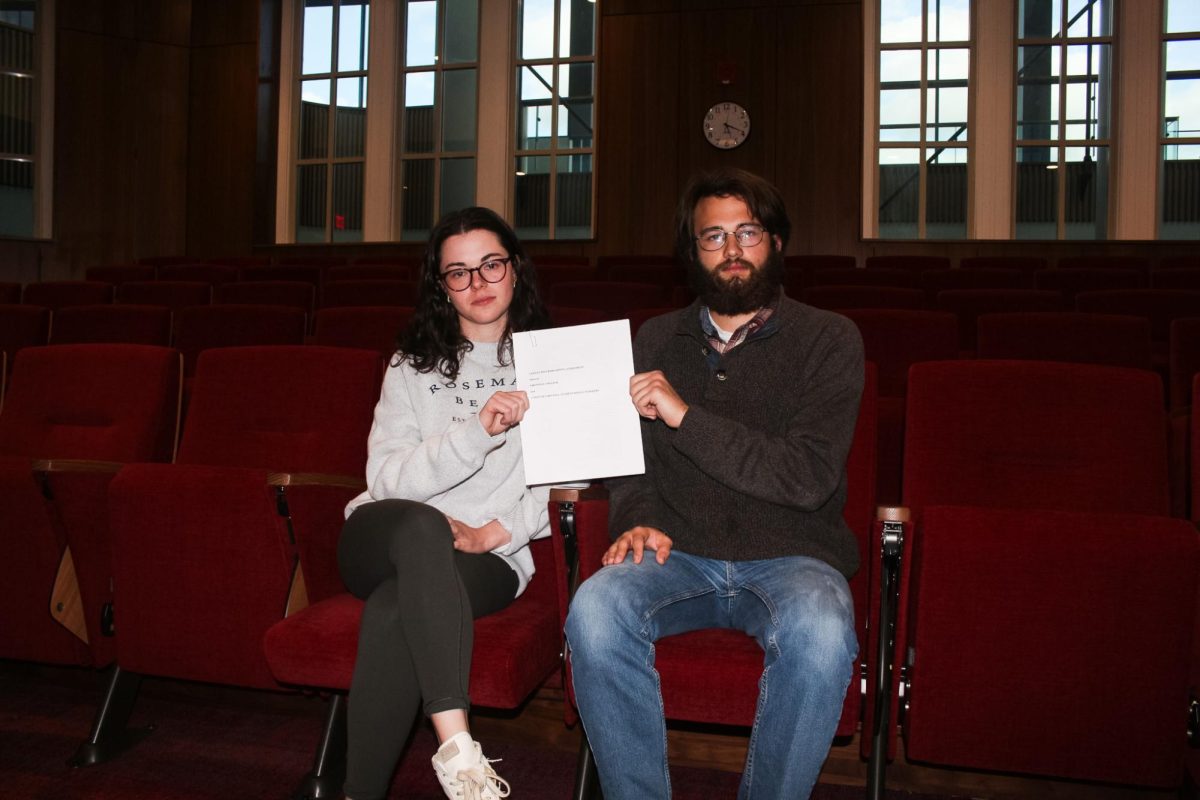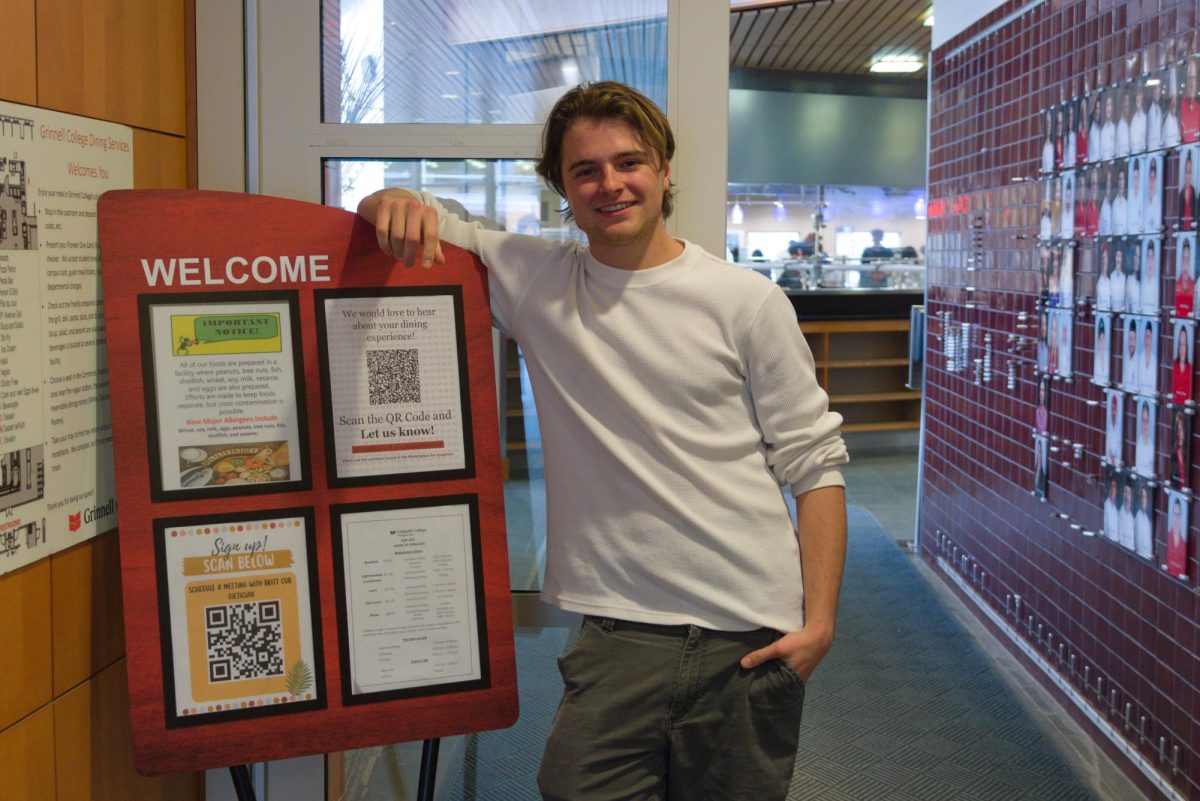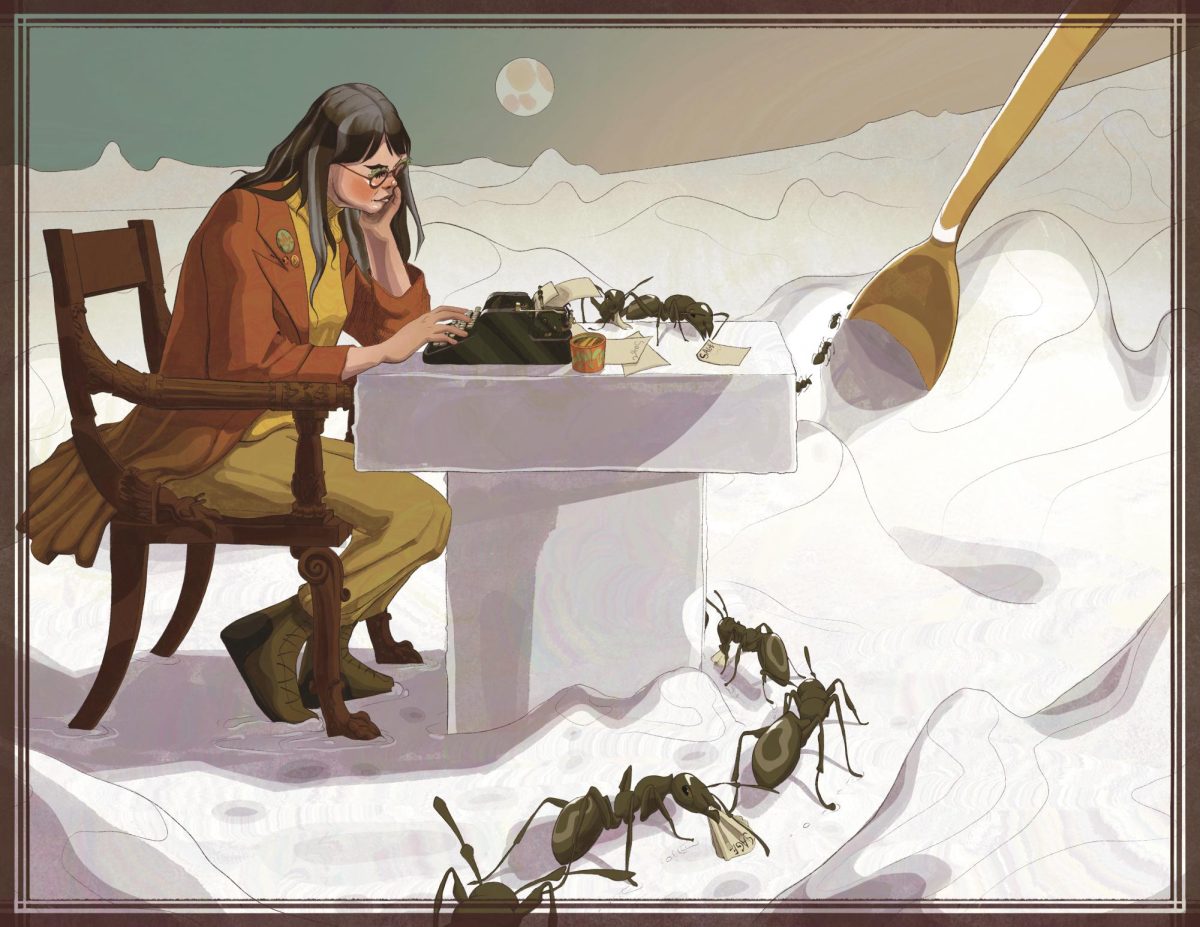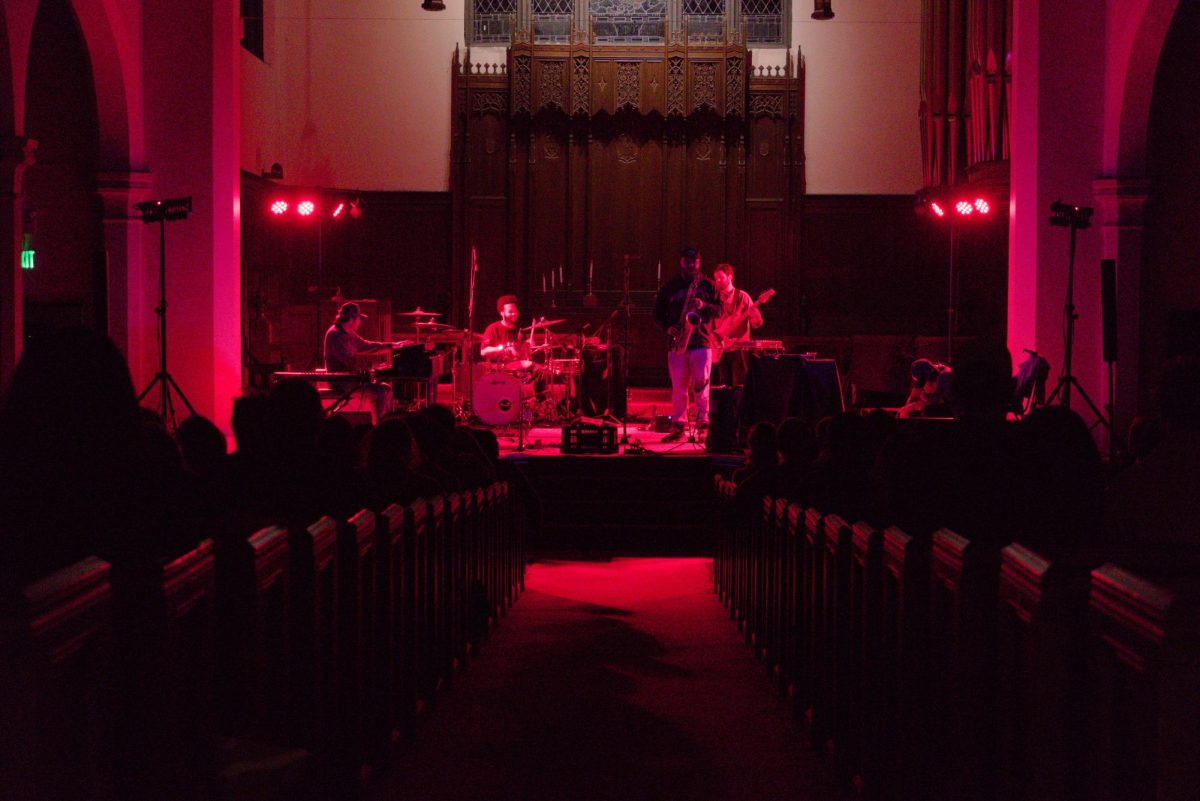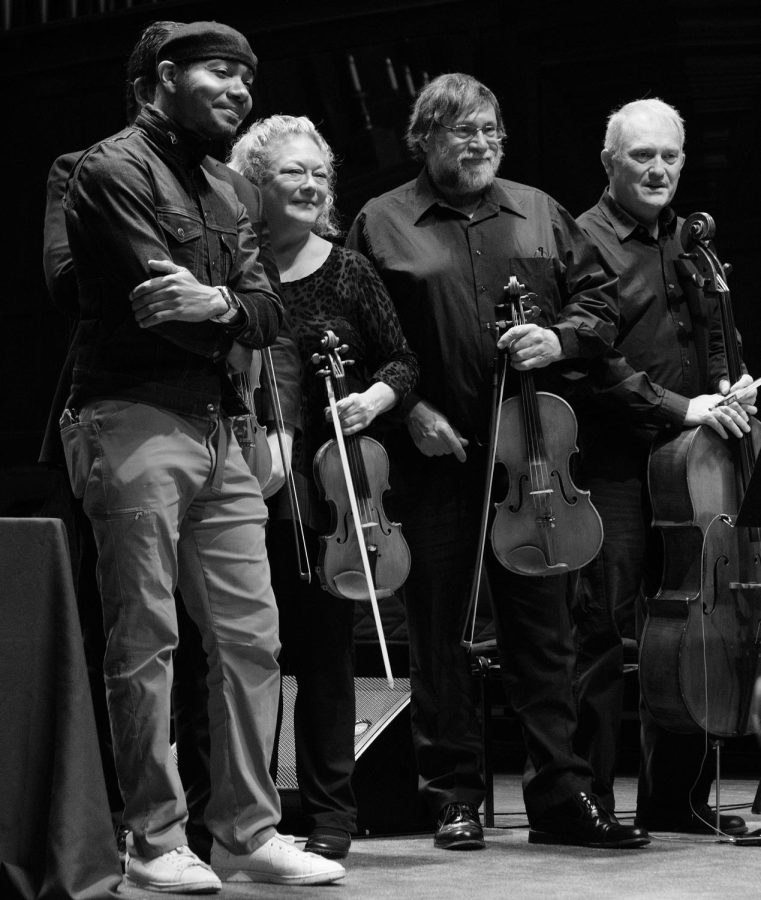“Hip-hop for geeks:” DJ Spooky remixes climate change
DJ Spooky with Grinnell College string instrument faculty, who accompanied him during his performance.
November 28, 2022
Swirling fractals and live demonstrations of musical mashups were just the beginning of DJ Spooky’s Scholars’ Convocation on Oct. 13.
DJ Spooky, also known as Paul Miller, is a genre-bending multimedia artist, having composed several musical pieces, published multiple books and much more.Miller was named one of National Geographic’s “Emerging Explorers” in 2014, during which time he went to Antarctica to work with a team from Dartmouth Cold Regions Research Labs as an artist in residence.
He said that there, he not only gained inspiration for his work, but he also collected temperature differentials that would be transformed into a series of musical pieces he dubbed “Arctic Rhythms.” During his Scholars’ Convocation, Miller explained the background, inspiration and process behind “Arctic Rhythms”. He then performed the collection at Herrick Chapel the following day.
“Once you get to the sense that everything is patterns, the rest is just matching the patterns,” Miller said, describing his process of mapping data patterns — in this case, temperature differentials — onto musical patterns such as tempo and other beat parameters.
Miller explained that he is not the first to use data as a tool to create music. He described it as “geek- core,” saying that once you begin layering, “you have a statistical model that you can continue to build on. So, this is like hip-hop for geeks.”
Miller named other artists such as DJ Krush, R.J.D., DJ Z-Trip and Girl Talk as pioneers within the mashup-heavy movement who, much like Miller, combine auditory and visual elements to create multimedia musical works.
Ultimately, Miller views his work as a vehicle for creating awareness and change regarding the environment. “We’re in a crisis of literacy right now, and especially the way that there’s still climate change denial,” he said.
Miller said that people detach from the issue of global warming thinking that they, as individuals, have no control over it and that it is too complex to accurately comprehend. “As much as possible, I want music and the visual arts and the sound arts, data arts, any of the arts, to help give people a better sense of how we can dimensionalize these issues,” Miller said.
Miller is currently working on a project as an artist in residence at Yale University, where he said he is seeking to do a series that marries music and quantum physics.
Miller’s performance in Herrick Chapel was a mixture of instrumental classical music and electronic, mixed and remixed in front of the audience in real time. A string quartet, consisting of two violins, a viola and a cello, performed the instrumental element, which was composed by Miller.
The instrumental version of “Arctic Rhythms” was the first piece played during the performance. It was followed by Miller’s remix which he said was composed using algorithmic music composition. Both pieces shared a dynamic and ethereal nature.
The next piece to be played was called “Icenification.” Miller said that he drew inspiration for this piece from 20th century American writer Iceberg Slim. Projected video added a multidimensionality to the performance, displaying shifting and moving representations of “Koch snowflakes.”
The Koch snowflake, named after Swedish mathematician Helge von Koch, was one of the earliest described fractals in mathematics. In keeping with Miller’s emphasis on patterns, fractals — visual representations of infinitely repeating patterns or formulas — are a fitting feature of his multimedia musical performances. This piece had a stronger, more futuristic electronic focus in contrast to the mix of instrumental and electronic elements in “Arctic Rhythms”.
Following “Icenification” was “Check Your Math.” This was an instrumental piece that was tense and energetic — its characteristics, shared with the futuristic remix that followed, would have blended seamlessly into the soundtrack of an action movie.
The last two pieces played during the performance were “Invincible Hip Hop” and its remix, followed by “Of Water and Ice.” “Of Water and Ice” was a demonstration in contrast, with ambient vocals layered over the upbeat bass. This work was also inspired by climate data and is available on Youtube.
Music major Anna Wilson `24.5 said the performance was a “conversation between generations of musical norms, between math and sound.”
“It literally gave me chills,” Wilson said.
More information on Miller and his work can be found on his website, at djspooky.com.


